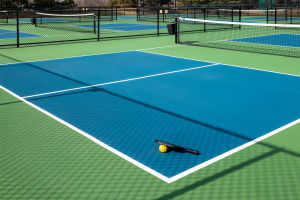Imagine hearing the starter pistol and exploding off the blocks, every muscle firing in perfect harmony. Olympic sprinters don't just run fast—they unleash a level of explosive power and precision that turns mere seconds into victory or defeat.
But what exactly goes on behind the scenes to create these "kings of acceleration"?
Let's zoom in on one key piece of their success: the explosive start. Understanding this helps us grasp the blend of science, training, and mental focus that turns athletes into champions.
The Muscle Magic: Building Explosive Strength
Sprint starts rely on something called fast-twitch muscle fibers. These fibers contract quickly and with great force but fatigue fast—perfect for a quick burst of power.
Most people have a mix of fast- and slow-twitch fibers, but elite sprinters often have a higher percentage of fast-twitch fibers, either naturally or developed through training.
How do they build it?
1. Heavy resistance training: Squats, deadlifts, and Olympic lifts like cleans and snatches train muscles to produce maximum force in milliseconds.
2. Plyometrics: Explosive jumping drills improve the muscles' ability to generate power rapidly. Think bounding, box jumps, and depth jumps.
3. Sprint drills: Starts from blocks, resisted sprints, and sled pushes condition the body for real race conditions.
Each of these targets not just muscle strength but the nervous system's ability to fire muscles faster and more efficiently.
Reaction Time: The Silent Race
The time it takes from the pistol firing to the first movement can decide a race. Olympic sprinters clock reaction times as low as 0.12 seconds—close to the human physiological limit.
How do they get so fast?
• Focus training: Sprinters practice reacting to random signals in controlled settings to sharpen their reflexes.
• Neural priming: Before a race, sprinters do explosive warm-ups and mental rehearsal to "prime" their nervous systems.
• Avoiding false starts: There's a fine line between a lightning-fast reaction and a false start (anything under 0.1 seconds is disqualified), so athletes train to push their reactions to the edge.
Mental Edge: Focus Under Pressure
Winning is 90% mental, according to many athletes and coaches. Sprinting is pure, intense pressure—every fraction of a second counts, and distractions can ruin a race.
Sprinters cultivate:
• Visual focus: Many use techniques like focusing on a point in the distance or the front of the blocks to maintain tunnel vision.
• Breathing control: Rhythmic breathing calms nerves and keeps oxygen flowing to muscles.
• Pre-race routines: Consistent warm-ups, listening to music, or specific movements help enter a flow state.
Dr. Lauren Sherar, a sports psychologist, emphasizes that, "controlling pre-race anxiety and channeling it into energy is key. The best sprinters don't eliminate fear—they use it."
Why Does This Matter Beyond the Track?
The science behind sprint starts isn't just for elite athletes. The principles apply to anyone wanting to improve power, speed, or focus in daily life.
Whether you're a weekend athlete or just want to move more efficiently, training explosive strength and reaction time can help in:
• Preventing falls by improving muscle response.
• Enhancing performance in sports and fitness activities.
• Boosting concentration under pressure.
So, next time you watch a 100-meter final, remember: beneath that brief sprint lies years of targeted muscle work, milliseconds of precise nerve firing, and a mental battle as intense as the physical one.
What if your next burst of energy—whether on the track, at work, or in life—came from training your body and mind with the same science? How would you start?


